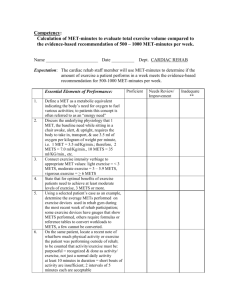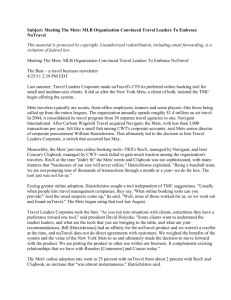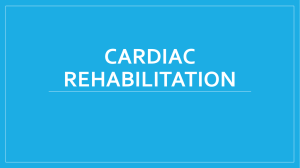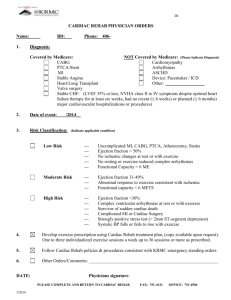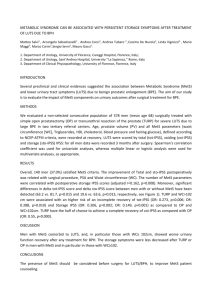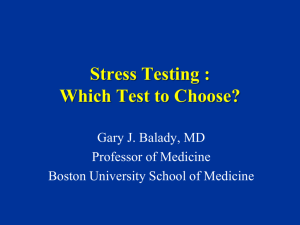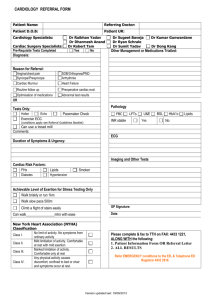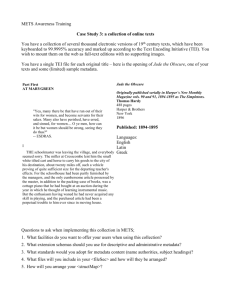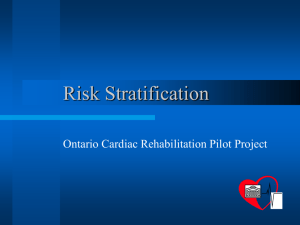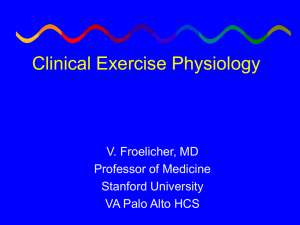Outpatient Rehab-Cardiac Post Eval
advertisement
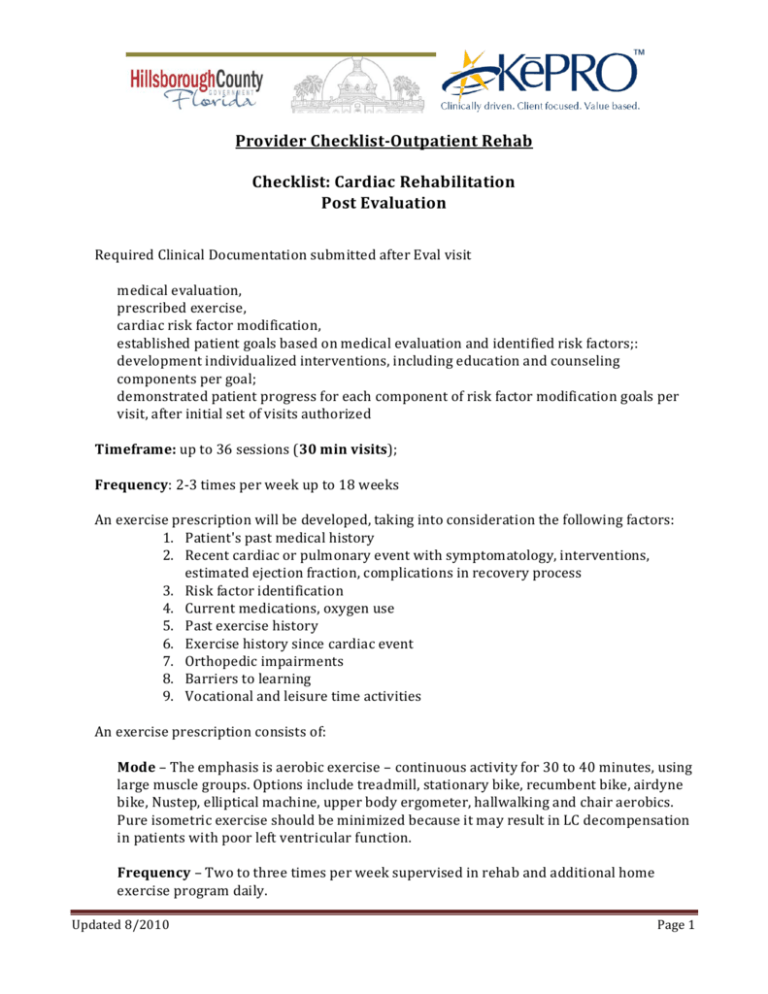
Provider Checklist-Outpatient Rehab Checklist: Cardiac Rehabilitation Post Evaluation Required Clinical Documentation submitted after Eval visit medical evaluation, prescribed exercise, cardiac risk factor modification, established patient goals based on medical evaluation and identified risk factors;: development individualized interventions, including education and counseling components per goal; demonstrated patient progress for each component of risk factor modification goals per visit, after initial set of visits authorized Timeframe: up to 36 sessions (30 min visits); Frequency: 2-3 times per week up to 18 weeks An exercise prescription will be developed, taking into consideration the following factors: 1. Patient's past medical history 2. Recent cardiac or pulmonary event with symptomatology, interventions, estimated ejection fraction, complications in recovery process 3. Risk factor identification 4. Current medications, oxygen use 5. Past exercise history 6. Exercise history since cardiac event 7. Orthopedic impairments 8. Barriers to learning 9. Vocational and leisure time activities An exercise prescription consists of: Mode – The emphasis is aerobic exercise – continuous activity for 30 to 40 minutes, using large muscle groups. Options include treadmill, stationary bike, recumbent bike, airdyne bike, Nustep, elliptical machine, upper body ergometer, hallwalking and chair aerobics. Pure isometric exercise should be minimized because it may result in LC decompensation in patients with poor left ventricular function. Frequency – Two to three times per week supervised in rehab and additional home exercise program daily. Updated 8/2010 Page 1 Duration – A goal of 30 to 40 minutes total including five-minute warm-up and fiveminute cool-down. Intensity – Initial exercise intensity will be based on diagnosis and previous exercise history. If patient is just beginning an exercise program, initial training will usually range from two-three METs (i.e., two-three miles per hour, 0% grade on treadmill, or 25 to 50 watts on bicycle). In patients with an angina threshold of two-three METs, exercise training may not be appropriate. metabolic equivalents (METs) Progression – A gradual increase of 0.5-1.0 METs will be prescribed as tolerated with a MET goal established individually at initial evaluation session. Exercise Tolerance and Assessment Tools Exercise tolerance will be assessed by monitoring heart rate response, blood pressure response and Borg Rating of Perceived Exertion, with desired level being 11 to 13. Exercise heart rate – Taking into consideration the above information, an exercise heart rate guideline will be calculated. This applies to patients who are not taking a beta blocker and who have been shown to tolerate the exercise heart rate without ischemia. 1. Age-adjusted maximum heart rate multiplied by 60%-75% 2. Age-adjusted multiplied by 60%-80% if approved by physician 3. 20 to 30 above resting heart rate 4. Graded stress test 5. Monitoring rate of perceived exertion is very useful. This is advantageous for many reasons: it is unaffected by negative chronotropic medications, unlike heart rate monitoring; it is quite reproducible across age, gender and cultural origin; and lastly, it only requires patient attunement to symptoms. Monitoring METs – Monitoring is determined by the patient's post-myocardial infarction exercise tolerance test and/or in rehabilitation and is highly individual. Updated 8/2010 Page 2
